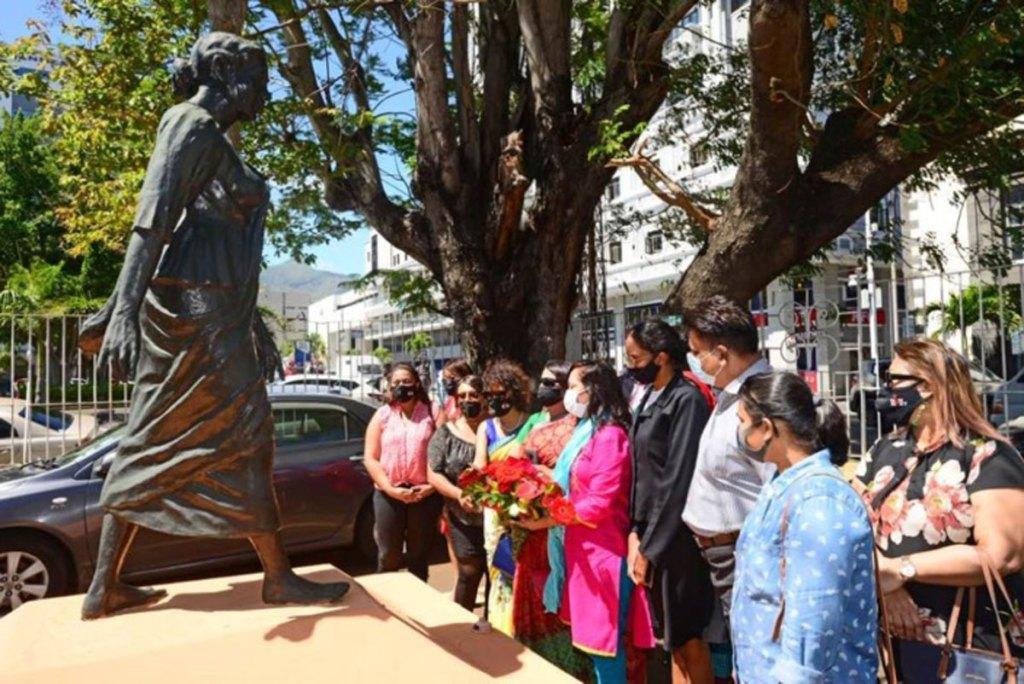Africa-Press – Mauritius. The commemorations of the 80th anniversary of the death of Anjalay Coopen were numerous and diverse. This iconic figure of the workers’ struggle in Mauritius continues to fuel the imagination of trade union movements as well as that of political parties and, more recently, feminist movements.
This is the universal force of figures like Anjalay Coopen, inscribed in diverse logics of martyrology, who respond to diverse problems. The feminist appropriation of Anjalay is a striking example because this historicist reading is contemporary and does not necessarily correspond to the demands of the time.
But it is precisely here that we see how figures and battles cross the ages and transcend eras in order to connect to current issues. This is, literally, what we call History, which should not be confused with historical chronicles.
We too often have this tendency to confuse History and historical chronicles in Mauritius. This stems from a blatant lack of knowledge and historicist culture, not to say a lack of knowledge about what constitutes the very foundation of the Mauritian spirit.
We therefore tend to talk about events without ever giving them meaning. The case of commemorations paying tribute to Anjalay clearly falls in this line.
There were wreath-layings and speeches about how she was part of a workers’ uprising and how she was murdered along with three others. The facts are correct, especially when you add the dates.
But what did we really mean when we said that? In other words, what is the meaning of the event that took place on the Belle Vue Harel property 80 years ago? Historians of the economy and the history of capitalism make a critical distinction between what they call infrastructure and superstructure.
Infrastructure relates to a whole foundation where the power relations between, on the one hand, capital and, on the other, labor, are played out, a relationship which is generally read under the prism of the exploitation of labor by capital, and which constitutes the way in which social production is organized.
The superstructure refers to the entire set of practices, institutions, beliefs, representations and ideologies which justify the social order established by the infrastructure.
Thus what is critical in the events of Belle Vue Harel concerns precisely the power relations of the economic infrastructure of colonial Mauritius, and in particular the function of the division of labor and the racial division in the constitution of relations of force which were constitutive of the capital/labor relationship.
In other words, the economic infrastructure of the sugar world was a division between the dominant and the dominated, where the dominant were the owners of capital and the dominated were the labor force which allowed the establishment of production and of the industrialization of the island through sugar.
This report was belligerent and violent. However, it is in this context that the uprising of the plantation workers took place. And the objective of the uprising was to move the lines that constitute these power relations by demanding more rights and better working conditions.
This is where the events of 1943 acquired meaning and where the assassination of Anjalay Coopen made him a figure in the workers’ struggle. This is where History takes on its meaning and gives us something to interpret the past but also the present.
So any tribute to Anjalay must question what the world of the sugar plantation was, and what continues from this world today. And any homage must question this in the conditions of class struggle and racial division that were constitutive of the colonial order. The relationship to race is at the very heart of the division between the dominant and the dominated in the space of the sugar plantation.
There is, from this point of view, an intimate link between slavery and indentured labor: these were the two historical forms of work and its exploitation, and these two forms of work were based in a differential relationship between the dominant whites, on one side, and the dominated non-whites, on the other, where the essential denominator was precisely race (hence the absolute importance of the color barrier in the Code Noir).
Thus, the History of Mauritian capitalism – which is the only and true History of our country – must be questioned based on the class struggle and the structural racism which operated in the economic infrastructure.
It must be questioned based on slavery and indentured labor systems, but also (especially) based on resistance to colonial and plantocratic power. It is this resistance that actually has political meaning. And here again, there is an intimate line that exists between maroonage and the struggle of committed workers in Mauritius.
These are two forms of resistance to a social and racist order experienced as unbearable and intolerable, and these two forms of resistance trace a historical line that is intimately connected and inseparable from each other. But we must not stop there. This is just a preamble, just a beginning, just an introduction. The state of class struggle and racism in Mauritius
The real question that a tribute to Anjalay must raise is the following: what is the state of class struggle and racism in Mauritius today? Where are we politically in responding to demands for progress and equality? Where are we politically in the face of the legitimate desire for emancipation and the rejection of exclusion and poverty? Where are we in the declared desire for independence and democratization of the economy?
While we commemorated 80 years of a drama which demonstrates what is the exploitation of man by man in the conditions of coloniality and racism in Mauritius, it would have been relevant to show to what extent the figure of Anjalay Coopen is still burning today and that current inequalities find their sources in colonial inequalities; they are even the consequences of this long and painful history.
From this point of view, the various tributes have given birth to a sidereal void which is a national embarrassment which it would be wise not to reproduce again.
http://www.mauritiustimes.com/mt/80-ans-depuis-la-mort-danjalay-coopen-quen-est-il-de-la-lutte-des-classes-a-maurice/
For More News And Analysis About Mauritius Follow Africa-Press







